wyatt earp
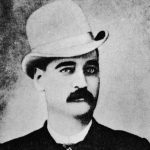 We have long known that my sister, Cheryl Masterson’s family is related to the notorious Bat Masterson…gunfighter, gambler, lawman, and well-known Old West character, but I didn’t really know very much about Bat Masterson. William Barclay “Bat” Masterson was born on November 26, 1853 in Iberville County, Quebec, Canada. His father, Thomas Masterson was born in Canada and by occupation was a farmer. His mother, Catherine McGurk, was an immigrant of Ireland. Bat was the second child in a family of five brothers and two sisters. They were raised on farms in Quebec, New York, and Illinois, until they finally settled near Wichita, Kansas in 1871. During his boyhood years he became an expert in the use of firearms, and accompanied expeditions that went out to hunt buffalo.
We have long known that my sister, Cheryl Masterson’s family is related to the notorious Bat Masterson…gunfighter, gambler, lawman, and well-known Old West character, but I didn’t really know very much about Bat Masterson. William Barclay “Bat” Masterson was born on November 26, 1853 in Iberville County, Quebec, Canada. His father, Thomas Masterson was born in Canada and by occupation was a farmer. His mother, Catherine McGurk, was an immigrant of Ireland. Bat was the second child in a family of five brothers and two sisters. They were raised on farms in Quebec, New York, and Illinois, until they finally settled near Wichita, Kansas in 1871. During his boyhood years he became an expert in the use of firearms, and accompanied expeditions that went out to hunt buffalo.
In the Fall of 1871, when Bat was 18 years old, he and his 19 year old brother, Ed decided to head west to Kansas, looking for adventure by hunting buffalo. During this time, they camped with hunters working along the Salt Fork River in what is present day Comanche and Barber Counties in Kansas. It was during their visits to other buffalo hunting camps that the brothers met several men who would also become legends in western history, including Wyatt Earp, Billy Dixon, Tom Nixon, and “Prairie Dog” Dave Morrow.
Bat Masterson was one of the very few who lived during the lawless days of the Old West who wasn’t there to make a name for himself, or to count the notches on his belt. In reality, he was a genuine and honest man, who didn’t have a reputation for violence, but was loyal to the end, and would defend his friends, if necessary. The nickname “Bat” was given to him by his companions one day while out on one of these hunting trips, the name coming from Baptiste Brown, or “Old Bat,” whose fame as a leader, hunter, and trapper was well known in the generation that preceded Masterson upon the Western stage.
In the summer of 1872, Bat and Ed worked on a construction crew that was expanding the Santa Fe railroad to Colorado. That winter, they returned to buffalo hunting and were joined by their younger brother, Jim in their camp along Kiowa Creek southeast of Dodge City. In January, 1873, the Masterson brothers gave up buffalo hunting. Bat remained in Dodge City, but his brothers returned to the family farm in Sedgwick County, Kansas. Ed, after deciding that farming really wasn’t for him, was soon back in Dodge…just a month later, in fact. Ed went to work in the Alhambra Saloon. For a time, Bat returned to buffalo hunting, but the number of buffalo were becoming fewer and fewer. By 1874, the vast numbers of buffalo roaming Kansas had been slaughtered, so many of the hunters moved south and west into what was hostile Indian Territory.
While this venture would prove profitable, the Indians tribes in the area correctly perceived the post and the buffalo hunting as a major threat to their existence and attacks were being made on some buffalo hunters. The hostile environment didn’t stop Adobe Walls saloon owner, James Hanrahan, from leading a party of Dodge City buffalo hunters, including Bat Masterson, southward on June 5, 1874. Along the way, a band of Cheyenne Indians ran off their cattle stock about 75 miles southwest of Dodge City. The hunters soon joined a wagon train en route to Adobe Walls, arriving just hours before the Indian attack, known as the Second Battle of Adobe Walls, took place.
Early in the morning of June 27, 1874, a combined force of some 700 Comanche, Cheyenne, Kiowa, and Arapaho warriors, led by Comanche Chief Quanah Parker and Isa-tai, attacked the buffalo camp. The 28 men, including Bat Masterson and Billy Dixon, took refuge in the two stores and the saloon. Despite being dramatically outnumbered, the hunters’ superior weapons repelled the Indian assault. After four days of continuous battle, about 100 men arrived to reinforce the post and the Indians soon retreated. Loss numbers vary, but as many as 70 Indians were killed and many others, including Parker, were wounded. The men at Adobe Walls suffered four fatalities.
Of course, the attacks brought retaliation in the form of an expedition against the Indians of the Texas Panhandle in what would become known as the Red River War. Masterson joined the expedition that was order by Colonel Nelson A. Miles, as a civilian scout and a teamster working out of Fort Elliot in what was then called Sweetwater, Texas (now Mobeetie). However, the next spring he was back to buffalo hunting and spending time at his friend Charlie Rath’s store, located about five miles from the fort, which had become the “headquarters” for the buffalo hunters. He was also a frequent visitor to the many saloons in the area. By early 1876, he was working as a faro dealer in Henry Fleming’s Saloon.
On January 24th, he became embroiled in an argument with Sergeant Melvin A. King over a card game and a dance hall beauty named Mollie Brennan. The argument quickly led to a gunplay and King was left dead. However, in the melee, King’s shot passed through Mollie Brennan’s body, killing her, and then hit Masterson in the pelvis. The injury caused Bat to walk with a limp for the rest of his life. After he recovered, Masterson returned to Dodge City, Kansas where he became a lawman along with his friend Wyatt Earp under Ford County Sheriff, Charles Bassett. These were the years that Dodge City was known as a “wicked little town.” Cattle drives had replaced the buffalo hunters as longhorn cattle were driven up from Texas along the western branch of the Chisholm Trail to the railroad. For the next ten years, over 5 million head were driven on the trail into Dodge City.
In July, 1877, Bat was appointed under-sheriff of Ford County under Sheriff Charlie Bassett. That very same month, his brother Ed Masterson became an assistant marshal in Dodge City. Just a few months later, in October, Bat announced in the Dodge City Times that he was a candidate for sheriff of Ford County, stating: “At the earnest request of many citizens of Ford County, I have consented to run for the office of sheriff, at the coming election in this county. While earnestly soliciting the suffrages of the people, I have no pledges to make, as pledges are usually considered, before election, to be mere clap-trap. I desire to say to the voting public that I am no politician and shall make no combinations that would be likely to, in anywise, hamper me in 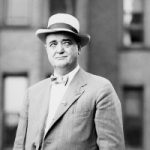 the discharge of the duties of the office, and, should I be elected, will put forth my best efforts to so discharge the duties of the office that those voting for me shall have no occasion to regret having done so. Respectfully, W. B. Masterson.”
the discharge of the duties of the office, and, should I be elected, will put forth my best efforts to so discharge the duties of the office that those voting for me shall have no occasion to regret having done so. Respectfully, W. B. Masterson.”
Masterson never again fought a gun battle in his life after the battle with King, but the story of the Dodge City shootout and his other exploits ensured Masterson’s lasting fame as an icon of the Old West. He spent the next four decades of his life working as sheriff, operating saloons, and eventually trying his hand as a newspaperman in New York City. The old gunfighter finally died of a heart attack in October 1921 at his desk in New York City. He had certainly lived an interesting life.
 Every family has it’s black sheep, and I have recently found out that one of mine is that my 7th cousin 3 times removed is Billy the Kid. Most of the people in my family tree are good people, and many are presidents and even royalty, but there are still a few of them who were…a bit on the wild side. Billy the Kid was one of those. On September 23, 1875, William Henry McCarty was arrested for the first time after stealing a basket of laundry. I can’t imagine why he chose a basket of laundry, but that was his entry into the world of crime. The jails back then weren’t super secure, so Billy the Kid broke out of jail, and roamed the West, eventually earning a reputation as an outlaw and murderer and a rap sheet that allegedly included 21 murders.
Every family has it’s black sheep, and I have recently found out that one of mine is that my 7th cousin 3 times removed is Billy the Kid. Most of the people in my family tree are good people, and many are presidents and even royalty, but there are still a few of them who were…a bit on the wild side. Billy the Kid was one of those. On September 23, 1875, William Henry McCarty was arrested for the first time after stealing a basket of laundry. I can’t imagine why he chose a basket of laundry, but that was his entry into the world of crime. The jails back then weren’t super secure, so Billy the Kid broke out of jail, and roamed the West, eventually earning a reputation as an outlaw and murderer and a rap sheet that allegedly included 21 murders.
No one really knows much about William’s birth, other than his name and approximate year of birth…between 1859 and 1861, in Indiana or New York. William’s dad was never in his life, and the family moved around a lot, living in Indiana, Kansas, Colorado 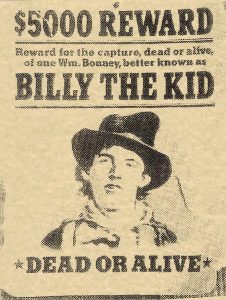 and Silver City, New Mexico. His mother died in 1874 and Billy the Kid…who went by a variety of names throughout his life, including Kid Antrim and William Bonney…turned to crime soon afterward. I guess that explains the decision to steal a basket of laundry. There are criminals who start out as good people, and then circumstances in their life force them to do things they might not otherwise do. Then, once they are into it, there is no going back. Billy the Kid became a horse thief in Arizona before returning to New Mexico, where he hooked up with a gang of gunslingers and cattle rustlers involved in the notorious Lincoln County War between a rival rancher and merchant factions in Lincoln County in 1878. It would be this time period that would eventually get him a death sentence.
and Silver City, New Mexico. His mother died in 1874 and Billy the Kid…who went by a variety of names throughout his life, including Kid Antrim and William Bonney…turned to crime soon afterward. I guess that explains the decision to steal a basket of laundry. There are criminals who start out as good people, and then circumstances in their life force them to do things they might not otherwise do. Then, once they are into it, there is no going back. Billy the Kid became a horse thief in Arizona before returning to New Mexico, where he hooked up with a gang of gunslingers and cattle rustlers involved in the notorious Lincoln County War between a rival rancher and merchant factions in Lincoln County in 1878. It would be this time period that would eventually get him a death sentence.
Billy the Kid wasn’t a big man, but rather had a slender build and prominent crooked front teeth. He loved to sing, and I have to wonder what he might have become had he chosen singing over crime. Nevertheless, after the Lincoln County War, he went on the lam and continued his outlaw’s life, stealing cattle and horses, gambling  and killing people. His crimes earned him a bounty on his head and he was eventually captured and indicted for killing a sheriff during the Lincoln County War.
and killing people. His crimes earned him a bounty on his head and he was eventually captured and indicted for killing a sheriff during the Lincoln County War.
Sentenced to hang for his crime, Billy the Kid managed to escape from jail one more time, murdering two deputies in the process. His freedom was short lived, however, as Sheriff Pat Garrett caught up with him at Fort Sumner, New Mexico, on July 14, 1881, and fatally shot him. Billy’s legend grew following his short life and violent death. Today he is a famous symbol of the Old West, along with such men as Kit Carson, Jesse James, Wild Bill Hickok, Doc Holliday and Wyatt Earp, and like many criminals of the past, his story has been romanticized in numerous films, books, TV shows and songs. Each year, tourists visit the town of Fort Sumner, located about 160 miles southeast of Albuquerque, to see the Billy the Kid Museum and gravesite.
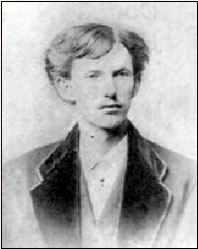 When we think of gunslingers from the old west, a number of names come to mind…among them, Doc Holliday. John Henry “Doc” Holliday was born August 14, 1851 in Griffin, Georgia, to Henry Burroughs Holliday and Alice Jane (McKey) Holliday. When John was just 15 years old, his mother died of Tuberculosis on September 16, 1866. His adopted brother also died of Tuberculosis. In 1870, at the age of 19, Holliday left home for Philadelphia, and on March 1, 1872, he received his Doctor of Dental Surgery degree from the Pennsylvania College of Dental Surgery. Holliday graduated five months before his 21st birthday, so the school held his degree until he turned 21, which was the minimum age required to practice dentistry.
When we think of gunslingers from the old west, a number of names come to mind…among them, Doc Holliday. John Henry “Doc” Holliday was born August 14, 1851 in Griffin, Georgia, to Henry Burroughs Holliday and Alice Jane (McKey) Holliday. When John was just 15 years old, his mother died of Tuberculosis on September 16, 1866. His adopted brother also died of Tuberculosis. In 1870, at the age of 19, Holliday left home for Philadelphia, and on March 1, 1872, he received his Doctor of Dental Surgery degree from the Pennsylvania College of Dental Surgery. Holliday graduated five months before his 21st birthday, so the school held his degree until he turned 21, which was the minimum age required to practice dentistry.
Many people remember Doc Holliday from the gunfight at the OK Corral in Tombstone, Arizona, but prior to that time, he was in Saint Louis, Missouri and Atlanta, Georgia. He started has practice in Saint Louis, but switched to Atlanta less than four months later 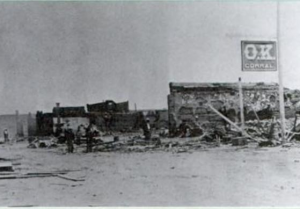 to join a dental practice there. While in Atlanta, Holliday and some friends got into an altercation, and in the end, Holliday went and got a shotgun. He came back and started shooting, either at or over the heads of the other men. Whether or not anyone was killed is up for debate, but Holliday gained a reputation as a gunslinger.
to join a dental practice there. While in Atlanta, Holliday and some friends got into an altercation, and in the end, Holliday went and got a shotgun. He came back and started shooting, either at or over the heads of the other men. Whether or not anyone was killed is up for debate, but Holliday gained a reputation as a gunslinger.
Soon after moving to Atlanta, Holliday developed a bad cough. The doctors told him that he had Tuberculosis. I can’t even begin to imagine how Holliday felt about that diagnosis. He had watched his mother die of that very disease, as well as his adopted brother. Holliday was told he needed to move to a dryer  climate, if he wanted to extend his life. He moved to Dallas, Texas. His dental practice could have suffered because of his ill health, or it could have been caused by the fact that he would rather play poker than work on teeth. Holliday was a decent poker player, so he found that it was a pretty good way to make a living. In 1875, Holliday was arrested in Dallas for participating in a shootout.
climate, if he wanted to extend his life. He moved to Dallas, Texas. His dental practice could have suffered because of his ill health, or it could have been caused by the fact that he would rather play poker than work on teeth. Holliday was a decent poker player, so he found that it was a pretty good way to make a living. In 1875, Holliday was arrested in Dallas for participating in a shootout.
Holliday left Dallas and began drifting between booming Wild West towns like Denver, Cheyenne, Deadwood, and Dodge City. He made his living at card tables, with heavy drinking and late night. All of these things were quite aggravating to his Tuberculosis. By 1887, Holliday’s hard life had caught up with him, forcing him to seek treatment in a sanitarium in Glenwood Springs, Colorado. Finally, on this day, November 8, 1887, Doc Holliday, gunslinger, gambler, and occasional dentist, lost his battle with Tuberculosis, just like his mother and adoptive brother before him.
 Growing up, my sisters and I watched lots of westerns. It wasn’t so strange really, because westerns were the in thing back then. Everyone loved watching them. One show I remember watching was The Gunfight at the O.K. Corral. It all seemed like it took place so long ago, and to many people I guess it was. Still, when you think of the fact that Wyatt Earp, a frontiersman, marshal and gambler, who got into a feud in Tombstone, Arizona, that led to the famous gunfight at the O.K. Corral passed away quietly in Los Angeles on January 13, 1929, it doesn’t seem so long ago anymore. I guess that in Wyatt Earp’s case, old gunfighters never die, they just lose their fight. Wyatt Earp was born on March 19, 1848, and that seems long ago. The gunfight took place on October 26, 1881…and Wyatt Earp survived. He had led such a wild life, that the thought of him ending up dying quietly in Los Angeles seemed…well, just too tame, and just too much a part of modern times to be right. Nevertheless, it was right. He did live in modern times, and in fact was a friend of John Wayne’s.
Growing up, my sisters and I watched lots of westerns. It wasn’t so strange really, because westerns were the in thing back then. Everyone loved watching them. One show I remember watching was The Gunfight at the O.K. Corral. It all seemed like it took place so long ago, and to many people I guess it was. Still, when you think of the fact that Wyatt Earp, a frontiersman, marshal and gambler, who got into a feud in Tombstone, Arizona, that led to the famous gunfight at the O.K. Corral passed away quietly in Los Angeles on January 13, 1929, it doesn’t seem so long ago anymore. I guess that in Wyatt Earp’s case, old gunfighters never die, they just lose their fight. Wyatt Earp was born on March 19, 1848, and that seems long ago. The gunfight took place on October 26, 1881…and Wyatt Earp survived. He had led such a wild life, that the thought of him ending up dying quietly in Los Angeles seemed…well, just too tame, and just too much a part of modern times to be right. Nevertheless, it was right. He did live in modern times, and in fact was a friend of John Wayne’s.
I’m not sure why that whole scenario struck me as odd. Wyatt Earp was 80 years old at the time of his passing…not an overly excessive amount of years…average, in fact. Since he was born in 1848, his passing in  1929 would be right. I guess that the thing that seemed strange to me was the fact that when Wyatt Earp passed away, my own dad was five years old. Yes, he was an old man, and my dad a young boy, but for those five years, their life spans occupied the same space in history. And yet, my dad’s life had no connection to the time of Wyatt Earp, or to the man that he was.
1929 would be right. I guess that the thing that seemed strange to me was the fact that when Wyatt Earp passed away, my own dad was five years old. Yes, he was an old man, and my dad a young boy, but for those five years, their life spans occupied the same space in history. And yet, my dad’s life had no connection to the time of Wyatt Earp, or to the man that he was.
Wyatt Earp was a boy in search of adventure, and ran away from home twice after the Civil War broke out when he was 13. He went to join up with his two older brothers, Virgil and James. Each time he ran away, he was caught before he could reach the battlefield, and he was sent back home. Finally, at the age of 17, he left for good. His family had moved from the Illinois farm to California, but Wyatt wanted adventure, so he headed out to seek his own idea of life. He worked many different jobs, most notably as a lawman, and of course, a gambler. Life was not kind to Wyatt Earp. At a point when he was finally ready to settle down with the woman he loved, he married Urilla Sutherland, the daughter of the local hotel owner. The couple married about 1870, built a house in town, and were excitedly awaiting the birth of their first child. Then, life hit him with it’s most 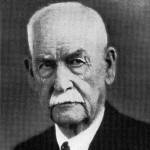 cruel blow. Within a year of their marriage Urilla contracted Typhus and died, along with their unborn child. Wyatt went off the deep end and became wild again. Eventually, he would be suspected of killing one of the suspects in his brother, Morgan’s death.
cruel blow. Within a year of their marriage Urilla contracted Typhus and died, along with their unborn child. Wyatt went off the deep end and became wild again. Eventually, he would be suspected of killing one of the suspects in his brother, Morgan’s death.
Unfortunately…or maybe fortunately, the west began to settle down. Wyatt was getting older. He settled in Los Angeles and hoped to have the Old West and his own legacy portrayed in film, but Hollywood wasn’t interested until after his death. I suppose it was then that Westerns moved into the forefront of television and movies. Westerns would then have a long run of popularity in the homes of many people…ours included.

